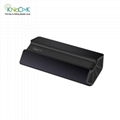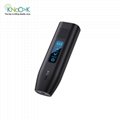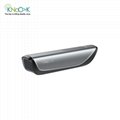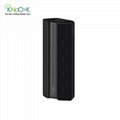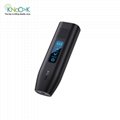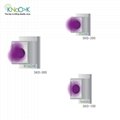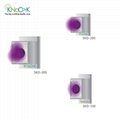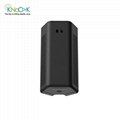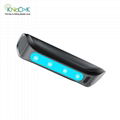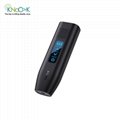| Model: | - |
|---|---|
| Brand: | KNOCK |
| Origin: | Made In China |
| Category: | Home Supplies / Other Home Supplies |
| Label: | UV Room Sterilizer |
| Price: |
-
|
| Min. Order: | 100 pc |
Product Description
UV-A: Ultraviolet bandwidths in the 320-400 nanometer range
Blacklight
Has no germicidal effectiveness
UV-B: Ultraviolet bandwidths in the 280-320 nanometer range
UV-C: Ultraviolet C; Ultraviolet bandwidths in the 200 – 280 nanometer range
UVC has a high degree of germicidal effectiveness in inactivating bacteria, viruses, and fungi
Of the three, UV-C is the most powerful and effective when it comes to killing pathogens in the operating room.
Test after test has conclusively determined that xenon powered ultraviolet light is more effective and efficient at disinfecting the OR.
On average, a xenon UV robot will complete disinfection in around 10 times less the amount of time. For example, a mercury robot’s 60 minutes would be approximately 6 minutes for a xenon robot.
UV light is a reliable, well-studied antimicrobial technology. Uv surface sterilizer works primarily by destroying the DNA inside bacteria, viruses and fungi. The high-energy portion of the UV spectrum called UV-C is most effective. UV-C light has been used for decades to disinfect industrial surfaces and sanitize drinking water. It is especially advantageous for use in hospitals because it kills the spore-forming bacterium Clostridium difficile, which is a major source of hospital-acquired infections.
Whole-room UV disinfection machine were first introduced to US hospitals around 2007. Since then, popularity has surged because they sanitize practically all of the surfaces in a room at once, with minimal labor and without hazardous chemicals. Even companies with roots in chemical disinfection have entered the whole-room UV disinfection market. For instance, Clorox recently formed a partnership with UV-device maker UVDI.
Shapes, sizes, and features of UV room disinfection devices vary. Most are the size of a small refrigerator or office water cooler. Some run for short periods of time while others run longer. Certain devices run until UV sensors placed in the room measure a particular UV dose. Some have mirrors that focus the UV light as the beam rotates around the room. Some are controlled digitally by touch-screens, while others are more simple analog devices. Many have motion sensors which shut the device off automatically if a person enters the room during treatment.
HOW ARE UV ROOM DISINFECTION DEVICES REGULATED?
The United States Environmental Protection Agency (EPA) is the primary regulator of chemical pesticides and pesticidal devices, though FDA and various US States also take part. EPA defines microorganisms as pests, disinfectants as pesticides, and disinfecting devices as pesticidal devices. Pesticidal devices are not subject to pre-market approval by EPA, though EPA does require data supporting efficacy to be held on file. Companies that make ultraviolet sterilizer must register with the Agency, then report how many units are sold each year thereafter.
OUR BRAND:KNOCK
EPA does not generally review or approve data supporting performance of UV devices before they are sold, so the onus is on infection control practitioners and hospital buyers to ensure the machines are killing microorganisms as promised. Careful evaluation of manufacturer claims is necessary to ensure the UV devices deliver the real benefit: reduction of hospital-acquired infections.
| Payment Terms: | TT |
|---|---|
Member Information
| Jiangsu Knock Medical Technology Co.,Ltd | |
|---|---|
| Country/Region: | Jiang Su - China |
| Business Nature: | Manufacturer |
| Phone: | 13606124811 |
| Contact: | Jessie Ye (salesmanager) |
| Last Online: | 24 Aug, 2020 |
Related Products of this Company
-
uv light for sterilization
-
KNOCK uv water sterilizer
-
commercial uv sterilizer
-
Wall-mounted UV sterilizer 99.99%
-
KNOCK uv sterilizer lamp
-
ultraviolet water sterilizer system
-
KNOCK inline uv sterilizer
-
ultraviolet water sterilizer system
-
Household and Commercial Wall-Mounted
-
UVC LED Sterilizer Anti-virus

